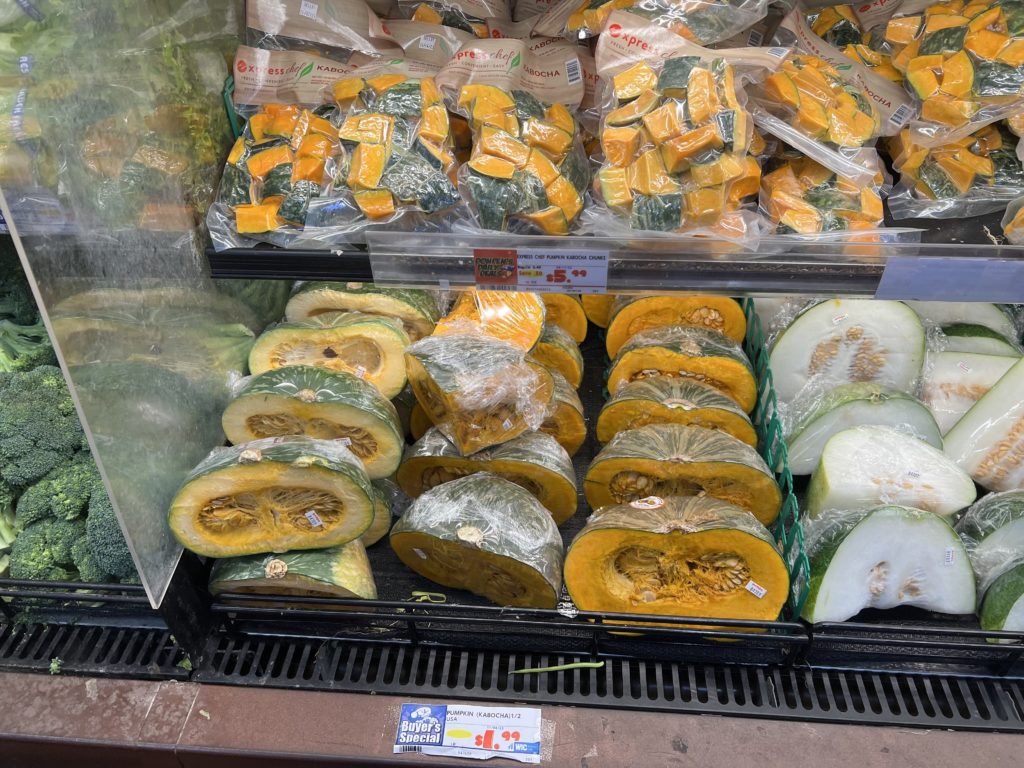Unveiling the Distinctions: Western Pumpkin vs. Japanese Kabocha

Pumpkin vs Kabocha
One of the most asked questions is, “What is the difference between Western Pumpkin and Japanese Kabocha?” often arises, and for those who have savored both varieties, the distinctions become delightfully apparent.
Having experienced pumpkins outside of Japan, I noticed that what I had encountered differed from what I had in mind.
Let’s delve into the nuanced comparison of Western Pumpkin and Japanese Kabocha, exploring the unique textures, flavors, and moistness that set them apart.
The Texture
- Western Pumpkin: The flesh of Western pumpkins is typically smooth and less dense, making it suitable for purees and soups.

- Japanese Kabocha: Kabocha has a denser and firmer texture, offering a creamier consistency when cooked. This makes it well-suited for a variety of dishes, including stews, tempura, and desserts.

Skin
- Western Pumpkin: The skin of Western pumpkins is usually thick, rigid, and less edible. It is commonly discarded when cooking.

- Japanese Kabocha: Kabocha has a thinner and edible skin, which softens when cooked. This characteristic makes it convenient for dishes where the skin can be incorporated, adding both texture and nutritional value.

Color
- Western Pumpkin: Western pumpkins are often orange, though there are variations in color.
- Japanese Kabocha: Kabocha has a deep green or greenish-gray skin, and the flesh is a vibrant orange-yellow. The contrast in colors adds visual appeal to dishes.
Nutritional Content
- Western Pumpkin: Western pumpkins are a good source of beta-carotene, which converts to vitamin A in the body.
- Japanese Kabocha: Kabocha contains not only beta-carotene but also a range of vitamins and minerals, including vitamin C, iron, and fiber.
Culinary Use
- Western Pumpkin: Commonly used in pies, soups, roasts, and as a side dish.


- Japanese Kabocha: Versatile in both savory and sweet dishes, such as tempura, stews, curries, and desserts like Kabocha pudding.


While both Western pumpkins and Japanese Kabocha belong to the squash family, the distinct characteristics of Kabocha contribute to its popularity in Japanese cuisine and its unique role in various culinary applications.

I’ve heard that pumpkins are available in many places around the world these days.
The photo above was taken in Hawaii.
If you find it, buy it and try it!
